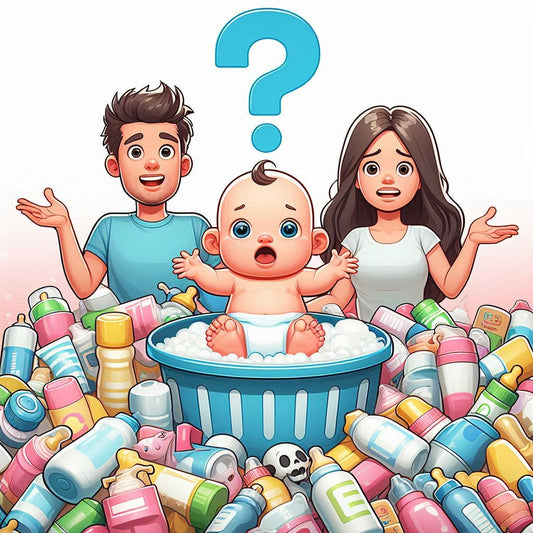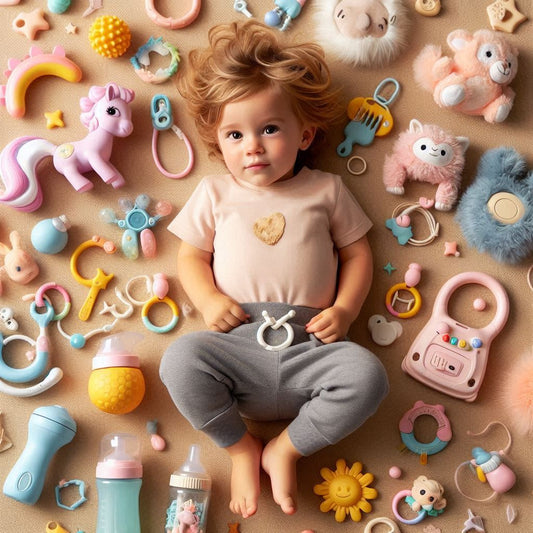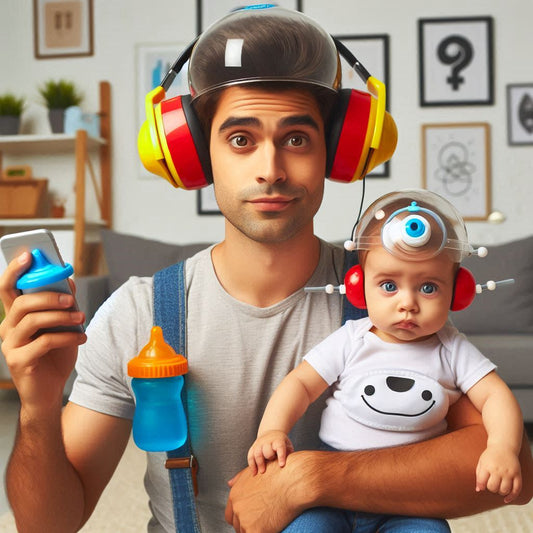Eco-Friendly Wooden Toys Buying Guide 2025: Safe, Sustainable Playtime Choices for Babies and Toddlers
Kin BuBShare
Plastic may be everywhere, but 2025 is the year parents are pushing back—choosing safer, more sustainable, and beautifully designed playthings for their little ones. And when it comes to eco-conscious play, nothing beats the charm and responsibility of wooden toys.With a rise in demand for non-toxic, Montessori-aligned, and environmentally responsible toys, eco-friendly wooden options are leading the way. This guide breaks down everything parents need to know about choosing wooden toys that are safe, ethically produced, and developmentally enriching.
Table of content
- 1. 🌱 Why Choose Wooden Toys in 2025?
- 2. 🧸 What Makes a Wooden Toy Truly Eco-Friendly?
- 3. 🧠 Developmental Benefits of Wooden Toys
- 4. 🏆 Best Wooden Toy Types for Each Age Group (2025 Picks)
- 5. ♻️ Sustainable Wooden Toy Buying Checklist
- 6. 🛏️ How Wooden Toys Complement Eco Sleep & Furniture Choices
- 7. 🙋 Frequently Asked Questions
- 8. 📌 Conclusion: A Conscious Choice for a Creative Childhood
🌱 Why Choose Wooden Toys in 2025?
Parents today are more mindful of what surrounds their children—from the crib they sleep in to the toys they explore the world with. Wooden toys are:
- Biodegradable and recyclable
- Durable (less breakage, longer play life)
- Free from harmful plastics, phthalates, and PVC
- Designed to stimulate open-ended play and creativity
- Often sourced from renewable forests and fair-trade practices
For eco-conscious families, wooden toys are a natural extension of green parenting values.
🧸 What Makes a Wooden Toy Truly Eco-Friendly?
It’s not just about the material—it’s about the entire lifecycle of the toy. Here’s what to look for:
1. Sustainably Sourced Wood
Look for toys made with:
- FSC®-certified wood (Forest Stewardship Council)
- Reclaimed or upcycled wood
- Bamboo (fast-growing and renewable)
2. Non-Toxic Paints and Finishes
Safe wooden toys use:
- Water-based paints
- Plant oils or beeswax finishes
- No synthetic sealants or harsh lacquers
3. Ethical Manufacturing
Choose brands that prioritize:
- Fair labor practices
- Local or low-emission production
- Minimal packaging (preferably recycled or compostable)
4. Age-Appropriate and Durable Design
Well-designed toys are made for:
- Safe chewing and teething
- Motor skill development
- Long-term reuse or hand-me-down potential
🧠 Developmental Benefits of Wooden Toys
Unlike flashy, battery-powered gadgets, wooden toys promote:
- Imaginative and open-ended play
- Fine motor skills and sensory development
- Focus, patience, and spatial awareness
- A natural aesthetic that calms rather than overstimulates
Many wooden toys are inspired by Montessori and Waldorf philosophies, focusing on tactile learning and child-led discovery.
🏆 Best Wooden Toy Types for Each Age Group (2025 Picks)
| Age Range | Toy Type | Features |
| 0–12 months | Grasping rings, rattles | Smooth wood, natural finish, chew-safe |
| 1–2 years | Push toys, shape sorters | Promote walking, coordination |
| 2–3 years | Wooden puzzles, stackers | Build logic and creativity |
| 3–4 years | Pretend play sets (kitchens, toolkits) | Encourage role play |
| 4+ years | Building blocks, dollhouses | Expand imagination and storytelling |
New for 2025: Modular wooden play systems and multi-use toys that adapt as kids grow, reducing toy clutter and waste.
♻️ Sustainable Wooden Toy Buying Checklist
Before you purchase, ask yourself:✅ Is it FSC-certified or made from reclaimed wood?
✅ Are paints and finishes clearly labeled non-toxic?
✅ Is the brand transparent about production and labor ethics?
✅ Does the toy have long-term developmental value?
✅ Is it packaged in recyclable or compostable materials?Bonus: Look for reuse or return programs—some brands now offer buy-back systems or discounts for recycling worn-out toys.
🛏️ How Wooden Toys Complement Eco Sleep & Furniture Choices
Wooden toys don’t just align with eco-play—they seamlessly complement natural nursery aesthetics and non-toxic furniture choices like:
- Sustainable cribs (made from FSC-certified hardwoods)
- Convertible wooden bassinets
- Low-VOC furniture accessories
A minimalist playroom with wooden toys pairs beautifully with natural fabrics, neutral palettes, and eco-safe sleeping environments—creating a holistic space where sleep, learning, and play coexist.
🙋 Frequently Asked Questions
1. Are all wooden toys automatically eco-friendly?
No. Some use harsh lacquers, uncertified wood, or are mass-produced without ethical standards. Always check sourcing and certifications.
2. Can babies safely chew on wooden toys?
Yes—if they're sealed with food-grade oils or left unfinished. Avoid painted toys for teething babies unless clearly labeled as safe.
3. How do I clean wooden toys safely?
Wipe with a damp cloth and mild soap. Avoid soaking or using harsh chemical cleaners.
4. Are there any wooden toys made from reclaimed materials?
Yes—some brands now use recycled wood from furniture, forests, or factories, reducing overall environmental impact.
5. What if the toy chips or splinters?
Light sanding with fine-grit paper can smooth small imperfections. Always supervise play and inspect toys regularly.
6. Where can I donate or recycle used wooden toys?
Check with local schools, daycare centers, toy libraries, or community reuse centers. Avoid landfill disposal whenever possible.
📌 Conclusion: A Conscious Choice for a Creative Childhood
Wooden toys offer more than play—they offer a path to sustainable living, conscious consumerism, and timeless childhood memories. In 2025, the best toy isn’t the flashiest or the most expensive—it’s the one that’s made with care, used with purpose, and cherished across generations.Whether you're building your child’s toy chest or gifting a newborn, choose toys that do more than entertain—choose toys that teach, last, and protect the world your child will inherit.
📝 Reference Links:
- Forest Stewardship Council (FSC) – for sustainable wood certifications
- HealthyChildren.org – Toy Safety Guidelines – from the American Academy of Pediatrics
- Green America – Eco Toy Resources




